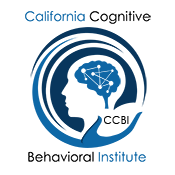The two main types of memory processes that predominate when someone is in counseling and/or psychotherapy are Implicit and Explicit Memory. What separates them is the level of conscious awareness in memory recall.
Explicit Memory: when we recall a memory of a specific instance, event or fact.
Implicit Memory: when we are not aware (largely unconscious) that a memory is being recalled when it is occurring.
An example of these would be implicit memory is remembering how to roller skate and explicit memory would be the day you learned to roller skate.
Explicit memory largely involves the hippocampus, which is in the brain area necessary for the creation and storage of new memories. It works with the Amygdala as well. Located in the medial or inner temporal lobes, it helps bind together the memory of perceived objects along with spatial and temporal contexts in which those memories occurred. These are stored in different areas of the cortex, not in a single location but across many regions of the brain. These fire when you are recalling a memory.
Implicit memory tends to be to involve implicit learning and memory of it when you are not aware you are recalling a memory. These are hard to verbalize and drive behavior and are not forms of automatic information processing which is why these types of memories happen below the level of awareness. The brain constantly looks for patterns in sensory outcomes and cues. Thus repeated patterns in performances and behaviors. These memories are also not stored in one location in the brain but the cerebellum, cortex and basal ganglia are all important players in implicit memory.
The key to starting to understand how we as mental health professionals help with change in our clients is by making the implicit and explicit memories both conscious to help store the memories in a new and empowering way. We assist in making this happen through the memory processes of consolidation and reconsolidation techniques.
When a persons sensory organs perceive and encode an event, a memory is recorded for that event. Following that experience the memory goes into a vulnerable state called consolidation period, during which new memories can be lost or altered. Memories are affected by our perceptions of the event and the meaning we make of that event so we may not remember everything exactly or accurately. Also these memories continuously go through revisions and changes as they age and are recalled. Each time a memory is recalled, details of it will change slightly
After the memory is recalled it will go through another consolidation round called reconsolidation. This continues over and over so memories are slightly altered and stored in a new way each time it is recalled.
2000 Nobel laureate for studies in memory processes, Eric Kandel, states in his book, “In Search of Memory: The Emergence of a New Science of Mind, “For all of us, explicit memory makes it possible to leap across space and time and conjure up events and emotional states that have vanished into the past yet somehow continue to live on in our minds. But recalling memory episodically – no matter how important the memory – is not like simply turning to a photograph in an album. Recall of memory is a creative process. What the brain stores is thoughts to be only a core memory. Upon recall, this core memory is then elaborated upon and reconstructed, with subtractions, additions, elaborations, and distortions.”
Cognitive Behavior therapy helps memory processes alter cognitive distortions and calm autonomic emotional reactions. In narrative therapy, it is the changing of the clients narrative, this deliberate process helps the client see a different side of a situation or memory, allowing that memory to be stored in a different way, and also having long lasting effects on other memories and future encoding. Changes necessitates the repetitive recall and reactivation of old memories, in conjunction with perspective change, cognitive distortion change, and negative narrative change and allow those memories to be reconsolidated.
Bringing implicit memory to conscious creates an opportunity for it to be modified and stored again. Important to note that two reasons that implicit process not brought into the conscious is they are not anatomically connected to regions of the brain that allow access, and they are not allowed access to awareness due to repression or denial.
Understanding the role that neuroscience plays not only provides useful explanations for what counseling does but also a framework for future education, practice and theory.

